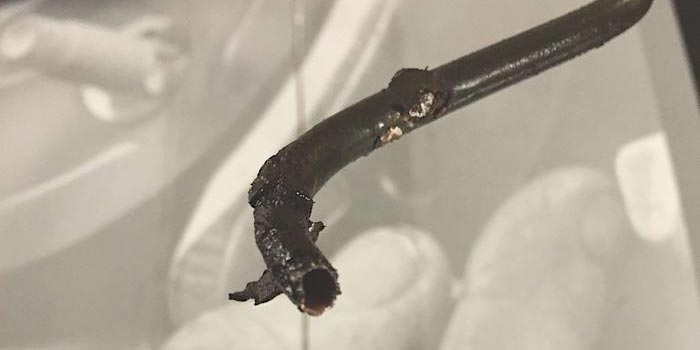Now more than ever, people are keeping their cars longer, new road de-icers are eating lines like never before, and brake line pressures are higher due to ABS and stability control systems. In short, today’s automotive landscape is a perfect storm for brake line replacement.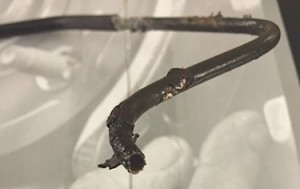
Brake lines corrode both on the inside and outside. As the additive package that prevents rust and controls the pH of the fluid breaks down in the interior of the line, the copper brazing that coats the inside of the line dissolves. On the outside, rust and de-icers take their toll on the exposed surfaces.
Automakers have tried galvanization, polymer coatings and physical barriers to stop this corrosion. But, these barriers can’t prevent age and the pecking of road debris from causing corrosion. This is why some late-model vehicles use stainless steel for the brake lines.
When it comes to brines and other de-icing agents, the chemistry is what makes them so caustic. MgCl2 (magnesium chloride) solution has high viscosity, high crystallization potential and strong hydrophilicity. So, it can stick on the surface of a metal and become solution again in a humid environment. Eventually, this may cause more severe corrosion than NaCl (rock salt), especially to components with coarse surfaces.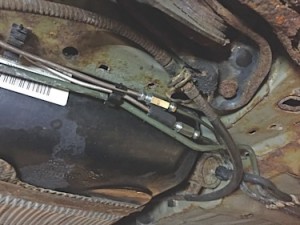
Now, for the big debate, what should you use to replace brake lines? The answer is complex, and every solution has its own advantages. Direct replacement lines are an option that works great on popular vehicles with known problems, such as early 1990s GM SUVs and pickup trucks. But, on less popular, older vehicles, this might not be an option due to availability and price.
If you have to fabricate your own brake lines, there are even more options. In terms of raw tubing, there is mild-steel Bundy tubing, stainless steel and nickel copper alloy. There are also brands that have special coatings and coverings to extend the life of the brake replacement line. Some new line materials are more flexible, so they can be formed on the vehicle by hand. But, in some cases, it pays to stick with a similar material so the value of the vehicle is not diminished.
Pre-flared and cut-to-length lines with fittings can save time by eliminating the flaring process, but sometimes they can be difficult to source due to flare, fitting and length considerations.
Fabricating brake lines from rolls of tubing and fittings can offer the fastest turnaround when replacing lines. Bending new lines is part art and part science, but in the past decade, new tools and materials have made the task a lot easier.
Here are some tips to ease the process:
1. Don’t skimp on flaring, bending and cutting tools: New tools are on the market that can flare a line while you have one hand tied behind your back. More expensive bending tools allow you to make bends tighter and closer to the fittings without deforming the line. Better tools will not only save time, they will save raw line and fittings.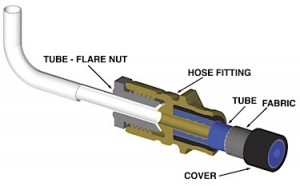
2. Look how the car is built: On some cars, the front and rear suspensions are on subframes. In most cases, the brake lines installed on the unibody and the subframes are attached. This can create problems if the brake or fuel lines need to be replaced. In the days of ridged lines, you might have had to remove the subframe, but more flexible tubing is now available that can be formed in place and routed to the attachment points.
3. Replace as much of the line as possible: Splicing together corroded line does not work in most cases, and replacing just the leaking section will result in a comeback. The best practice is to replace the hard line from the wheel well to an undamaged line. On vehicles with coated line, find the area where the coating is still intact.
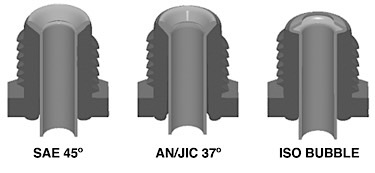 4. A flare is a precision device: Never take a flare for granted. To seal brake lines against 2,000 psi takes some geometry. The male and female surfaces of the fitting are three to five degrees different between the sealing surfaces. In some cases, the flare is designed to crush or compress onto the surface to form a seal, and the tolerances can stack up quickly against you. An off-center cut combined with a poorly clamped line may look fine to the naked eye, but the connection may leak when it is compressed by the fitting.
4. A flare is a precision device: Never take a flare for granted. To seal brake lines against 2,000 psi takes some geometry. The male and female surfaces of the fitting are three to five degrees different between the sealing surfaces. In some cases, the flare is designed to crush or compress onto the surface to form a seal, and the tolerances can stack up quickly against you. An off-center cut combined with a poorly clamped line may look fine to the naked eye, but the connection may leak when it is compressed by the fitting.
5. Use new fittings: You can remove the fittings from the old line and reuse them on the new line, but it is a better practice to use new fittings. The old fittings can be cracked, corroded and the threads could be damaged.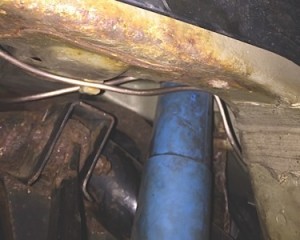
6. Lubricate your flaring dies: Flaring dies can become damaged if they are not lubricated. This can create flares that can’t seal. If a die or other part of the tool is damaged, get rid of it.
7. You might need a scan tool: If you install new brake lines on a modern ABS-equipped vehicle, you will need a scan tool to bleed the brakes. Air bubbles in the system can occur in the modulator body if the system has lost all its brake fluid. Removing these bubbles may require the use of a scan tool to open up the isolation and dump valves in the modulator.
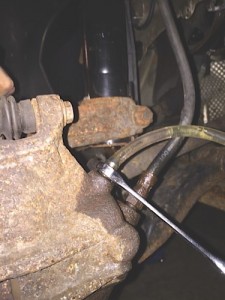 8. Not all deburring tools are the same: A good flare starts with a square cut that is clean and deburred. New deburring tools can make sure the die is straight before forming the flare.
8. Not all deburring tools are the same: A good flare starts with a square cut that is clean and deburred. New deburring tools can make sure the die is straight before forming the flare.
9. Charge for your time and skills: When estimating a brake line repair job, make sure to charge for not only your time, but your expertise as well.

